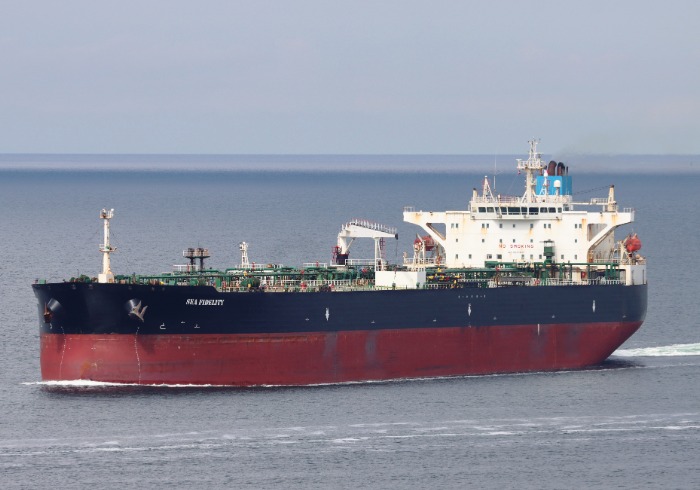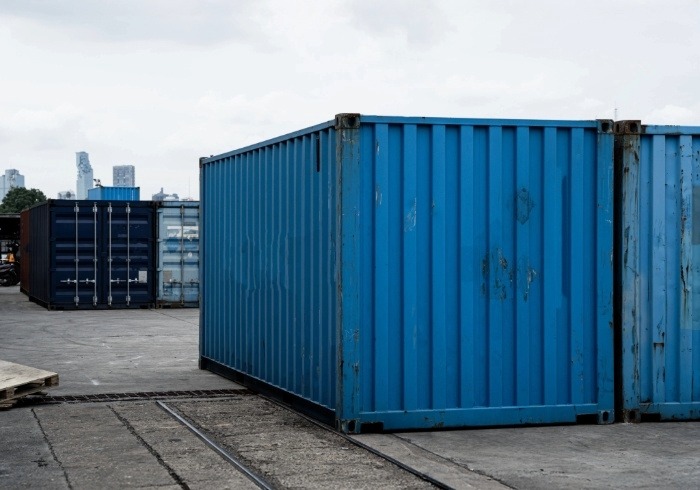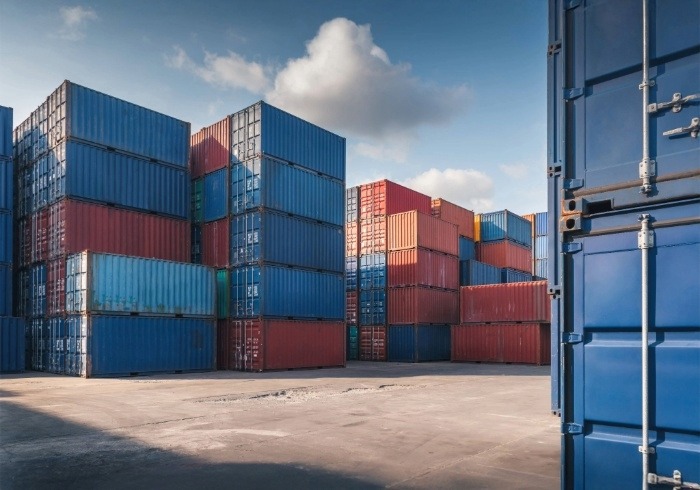South Africa remains a frontier market for foreign banks looking to conduct trade finance business on the continent. GTR and RMB gathered a group of representatives from these banks to discuss their strategies, risk appetite and will to collaborate.
Roundtable participants
Minos Gerakaris, head: trade finance, Rand Merchant Bank (RMB)
Shannon Manders, editor, GTR (chair)
Lodewyk Meyer, director, Norton Rose Fulbright
Sanjeev Oza, vice-president, trade head South Africa, Citibank
Jean Rey, chief representative officer – Johannesburg, MCB
Mark Sherratt, director, Johannesburg representative office, MUFG
Andre Snyman, chief representative officer, Johannesburg representative office, Doha Bank
Many thanks to RMB for kindly hosting this roundtable at their Johannesburg office.
GTR: What is the current demand for trade finance in South Africa? How do the trade finance offerings of international banks compare to local and regional banks?
Snyman: The demand for trade finance business in South Africa and across Sub-Saharan Africa will always exist but it may differ from country to country and be more specifically dependent on the underlying product and the strategic importance thereof to the importing country.
Doha Bank recently opened an office in South Africa, so we are looking to build assets in South Africa and across the African continent. We are looking to do so in the trade finance space and we will therefore focus on primary trade finance business and selective secondary market business. To start off, we will approach the top-tier South African banks and then follow a similar approach across Africa but only in selected countries.
It is a matter of risk and reward. You should be looking at business with banks that you are willing to take the risk of and following that, you make sure you negotiate the acceptable pricing relevant to the market conditions. For a player such as Doha Bank, which is new on the continent, we are exploring the markets to determine with which banks we will do business, obviously referring it back to head office for them to make the final decision as to whether the ROE of such a transaction is viable. It is important to note that as a rep office, we are not allowed to engage into direct business, but can only act as a marketing arm of our head office.
At this stage, we are not after a particular product, although most of the business coming forth is infrastructure, power, energy, petroleum and the basic commodities. Currently, we are looking at Nigeria, Ghana, Kenya, Ethiopia and South Africa. In the next phase, we will look at building towards the likes of Angola, Mozambique and other markets where the obvious activities and opportunities avail themselves.
In closing, I have seen a decrease in secondary market transactions being offered as there are a lot of pressures created by low commodity prices and increasing foreign exchange shortages in many markets.
Oza: Traditionally, the South African trade finance market has been challenging primarily because it enjoys excess liquidity – a condition that continues today.
However, opportunities for trade finance banks active in South Africa are improving for a number of reasons. Firstly, among incoming multinationals there is a resurgence of interest in focusing on working capital, and in particular value chain financing, such
as supply chain financing and distributor financing, as they are trying to access emerging consumers.
That is part of the broader trend among multinationals to try and increase revenue streams and make their balance sheets work more effectively.
Secondly, Basel III is making trade finance more relevant as a lending product compared to term lending or standard overdraft lending because it encourages banks to hold more structured assets.
As a result of these two trends, we are experiencing an exponential increase in the number of deals and the balance sheet capacity that we are being asked to make available compared to historical trends.
Rey: There is scope, I feel, for international banks – with a representation in South Africa – to contribute more to the trade finance space in South Africa. With this in mind, I have approached both the SA Reserve Bank and the Banking Association South Africa with the suggestion to establish a platform for rep offices of foreign banks within the latter’s SA banking framework and, in so doing, develop a more efficient network following a structured approach.
South African banks have traditionally looked at foreign banks entering the country as potential rivals and competition. I see it differently. I see it more as providing a complementary service. South African banks have their ‘boots full’ of South African risk; maybe it is time for them to swap some of it for African and other risk. By the same token, foreign banks are exposed to other risk and none, or not enough, South African risk, which they are prepared to take. There is definitely a need for co-operation rather than competition.
GTR: What are others’ thoughts in terms of co-operation versus competition?
Gerakaris: I think the change from competition to collaboration has happened over the last five or six years. In the past, South African banks were very reticent to even be speaking to their peers in the domestic market. The market was naturally segmented between the four major players. As the market has grown over time, everyone has been full on their prudential limits, and the need to bring some fresh money into the equation in terms of risk appetite is there.
A rebalancing is starting to happen in South African banks as we see more of the large global traders using Johannesburg and South Africa as a base to arrange their Africa facilities, including their large export finance deals, as well as their RCFs. It has become far more of a focus to collaborate with international players when arranging these facilities.
Sherratt: In terms of the collaboration from a Japanese bank’s point of view, MUFG has been in South Africa since 1964. That first office was really there to support the Japanese business, and that model continued for 35 years, up until the early 2000s, when they realised we need to be looking outside of Japan. You saw a big drive from the Japanese banks looking to go outside of that market and tapping into new markets, Africa being one.
The problem was that, across the various products, trade finance through to structured facilities, we just did not know the market. We needed that collaboration. We signed an MoU with FirstRand to be our partner bank into Africa. What MUFG had seen was, in order for us to take on African risk, we needed a partner who knew the market far better than we did. To date, it has been very successful.
In terms of Japanese business, there has been a strong interest into Africa, looking at South Africa as a stepping stone. On the trade finance side, Japan has been in Africa for a number of years. Over the last 20 years they have probably taken their eye off the market, and the Chinese have come in. But there has been a big drive now by the Japanese government to get back into the market. We have seen some trips by the prime minister, back in January 2014, into Mozambique, the Ivory Coast and then on to Kenya. Since that trip, we have seen Mitsui, one of the Japanese trading houses, taking some significant stakes in Mozambique. They have taken a 50% stake in the Nacala Corridor from Vale, and they have a 20% stake in Area 1, in the gas field that is operated by Anadarko. They really positioned themselves for future growth in that market. Going back to collaboration, the partnership with FirstRand has been key to providing trade finance lines to Mitsui.
Gerakaris: Mark, when you see deals of that sort of quantum, it is more than collaboration; these are now large-scale syndications. Lodewyk, I am sure you are seeing these, in that pretty much every deal now is not single name lenders?
Meyer: Yes, from our perspective, what we have seen in the last six months to a year is certainly that: either local banks or international banks leading syndications on borrowing-based facilities. We have been involved in a number of transactions in the last year. What is interesting is the mix of the banks that are in these deals. A recent European-led one was for a South African commodities manufacturer, and the banks varied from the local South African banks to some of the Asian and European banks. Banks are collaborating on these facilities. We have been involved on the borrower side as well as on the lender side.
I find collaboration between the banks to be very, very good. A couple of years ago, you would have the banks fight around the table to get to common terms. Nowadays, the common terms are settled pretty quickly and the decision-making processes have improved tremendously.
On the local side, my sense is that the deals are slower. We are not seeing as many deals in South Africa for South African-based borrowers. We have seen a number of international traders enter the country and use South Africa as a base for procuring their financing.
The challenge is always currency – that is a challenge for the entire continent. It is going
to be interesting what the drop in commodity
prices is going to do for the market. We anticipate some restructurings, and, in the context of South Africa, some of the smaller borrowers are facing tougher times.
GTR: For foreign banks: what opportunities does a South African presence offer for doing trade business elsewhere on the continent?
Rey: South Africa is undeniably a developed financial powerhouse on the African continent and South African banks are knowledgeable and of international standard. SA is a good place to start and leverage from when wanting to move elsewhere in Africa. Even in terms of simple logistics, it is reasonable to say that SA is the best regional travel hub into the rest of Africa.
Sherratt: In markets where foreign banks do not have a local presence, they do value the fact that there are a number of institutions that are prepared to go in there. From a risk perspective, certainly looking an MUFG point of view, if we go into a transaction and there is RMB, Standard Chartered, Standard Bank or MCB, we take comfort in the fact that there are people on the ground who have significant knowledge of the continent and who are involved in the transaction. Certainly, our credit team take a lot of comfort from that.
Snyman: My appointment as the chief representative for Sub-Saharan Africa has just that in mind: it will introduce Doha Bank to an entire new market and will have a trusted source that will feed them with appropriate information and will be looking for the kind of business they will be comfortable with.
GTR: Which players are the most prominent in the trade finance deals being signed on the continent today?
Meyer: From a lender’s perspective, we are seeing the European banks back in the market, so the amount of enquiries and mandates we have had in the last six months from French, Swiss and Dutch banks has certainly increased, particularly in East Africa, but also in South Africa. I think it is a function of following the international traders sometimes. We have also seen some of the Middle East-based lenders in the market.
On the soft commodities side, we are seeing the traders stepping in and providing finance to those suppliers from whom they procure. There is certainly an increase in activity in Zimbabwe, Zambia, Kenya, Tanzania, Uganda and Ghana. In West Africa, some of the US traders are coming in too.
We have certainly had a lot of inquiries from non-banks stepping into the value chain, some on the receivable side: so, typically factoring, types of transactions or receivable financings. That is just a function of the shift in credit risk to corporate buyers of goods and services.
Gerakaris: The traders are the major game in town. They are doing the largest volumes, but it is also because they are arranging on behalf of underlying miners, clients, importers and exporters, so arranging the finance at their typically cheaper cost of borrowing, and then, in some respect, disintermediating the banks. We are also seeing the non-traditional players in this space – for example, insurance companies – starting to play a very active role in the guarantee space.
Then the hedge funds are the newest entrants into the market: they are taking the high-risk portion, which has become less attractive to banks. Often, the first loss portion on a borrowing base or a large structured facility is now being taken by a hedge fund, with the remaining tranches being syndicated amongst banks.
Meyer: Mauritius is a very attractive destination for some of these funds to set up: not only private equity but also debt funds. We are seeing that being driven by the insurance industry, but also, as you say, by the hedge funds. For them, an Africa trade transaction is an attractive asset class, just because of its self-liquidating nature, relatively low probability of default and then, of course, the short tenor. We are seeing a lot of book-building activity, if you like, on the smaller, higher-risk type transactions and trade in commodities that one would not normally expect a bank to be looking at, such as perishables, for instance: fruit, flowers – commodities that move quite quickly.
On the insurance industry, that has been a very interesting development, because we have certainly seen an increase in the provision of indemnity cover in the value chain. That is either provision of indemnity as against an infrastructure project, or, as we are now seeing, even indemnity as against trade receivables. Because an insurance company is not in the business of issuing a demand guarantee, but would rather provide an indemnity as against a loss.
GTR: What is your view on the entrance of these non-bank institutions into the market?
Oza: We are always open to new funding partners. There are a number of drivers that will encourage non-bank participation. There is increasing pressure on banks to churn their balance sheets and make them work harder. At the same time, the bank market has only got a finite level of capacity and as demand grows additional capacity will have to be found from new sources. Moreover, these assets are increasingly attractive to non-bank institutions, which are seeking new investment options given the challenges facing many global markets.
Snyman: From our experience, what we have seen is that the transactions being offered to us for participation are fairly large, so there is always the issue of limits for counterparties, sovereigns, and so forth. Your choice is: you either go for one big transaction, and that is it for the year; or you split up, diversify and go for smaller portions, but with multiple transactions and counterparties. When you bring in the traders, that obviously creates another platform, another counterparty.
Rey: Banks in general seem to concentrate on the larger transactions, especially when entering into new markets. What I hear Andre saying is that we ought to also be looking at smaller transactions. This, however, invariably comes with an increased element of risk. We welcome the introduction of intermediaries coming in, taking perhaps the higher-risk portion that the banks are not prepared to take or are uncomfortable in taking.
If we want to further develop trade finance in South Africa and more so in the rest of Sub-Saharan Africa, we must look at a way to mitigate the risk to make it more acceptable to all of us.
GTR: Do you think South Africa is going to remain the place for banks to set up and do business from, or are we going to see a shift to elsewhere in Africa? Will it always be South Africa, despite the fact that the trade finance business might be slightly underperforming?
Rey: The answer is twofold. There is no way we can argue that South Africa is not the most developed financial sector in Africa. Having said that, it implies that SA banks are very sophisticated, catering appropriately for their market. With that, the opportunity in SA per se is limited unless SA banks increasingly go into the African continent, and, as I said earlier, ‘empty their boots somewhat’ to be able to diversify their risks. In a way, to be able to continue developing the South African market, we must take note of that. Being insular and looking primarily internally provides the opportunity for other regional areas to develop.
The attraction of having a set-up, for example, in East Africa or West Africa, to cater for these regional markets, is very real. MCB established its second African representative office – after Johannesburg – in Nairobi over a year ago.
Meyer: I think that is already happening. From our perspective, I do not think there is a single conversation with a financial institution in this market that does not have the intention to go into other African markets. It is just a natural process.
GTR: Are there any specific names to add to the mix?
Rey: Côte d’Ivoire is a reasonable option, especially as the declining price of oil seems poised to remain with us for some time to come and this ought to have a negative impact on those African countries placing an ‘overreliance’ on that for their continued economic growth.
Gerakaris: That is up and coming. The big, established trade markets, which actually dwarf SA in terms of requirements, are Nigeria and Angola. Both of these markets, through lack of domestic capacity, are import-driven economies. That is coupled with the fact that, with tight exchange control in both these markets, traditional or documentary trade products are required to access forex. In terms of volume of trade, those two dwarf the SA market.
GTR: What impact do fines imposed on some banks have on the appetite of others when it comes to exposure? Are we seeing a ‘return to home’ strategy for some international banks because of this?
Oza: The fines are large enough to shut down any business: they are significant. The OCC – the US bank regulator – clearly regards trade finance as a high-risk product because of its transactional nature and the ability for money laundering to take place and has imposed fines accordingly. Regulators in Europe are also increasing their focus on how banks are managing trade finance – and this focus will be permanent.
All banks therefore need to ensure that at a local, regional and global level, the appropriate controls, checks and balances are in place. At Citi, prudence is our watchword: ‘Continue to do what you are doing, but with increased vigilance.’
While the scale of fines may be significant, they should not detract from doing business and investing in Africa. They just mean that any investment must be carefully controlled and monitored so that new business does not risk attracting fines, which could reverse 10 or 15 years of hard work.
Gerakaris: There should never be any regulatory arbitrage. The rules are pretty uniform. Even for African banks, like us, we all need nostros in the major hard currencies, and thus comply with the same extent as our international peers. It is not to say: ‘Well, there is a pullback by large US or European banks, and we can rush in and fill that void.’ AML is the number one issue facing all banks involved in trade finance at the moment. There is a constant striving to improve policy and procedure, and align with our international partners.
Meyer: Certainly, on the syndications, we are seeing a lot more collaboration between the banks on compliance to AML and Basel III. It is interesting to see how the banks are dealing with it. For those institutions that may not be Basel III-compliant but want to partake in the syndicate, they immediately step up their controls and give assurances on regulatory compliance.
Sherratt: We are also seeing that pool of third-party international banks diminish, as a number of the international banks have shut down their African business, not particularly because of the risk or the compliance issues in Africa; more because of issues they have had elsewhere: Mexico, for example, and the likes. One particular bank had a significant African business operation, and the view was taken that they were not going to risk the overall reputation by the amount of money that they made out of Africa. With them leaving, it definitely leaves a huge vacuum in some of the markets that they were operating in.
Gerakaris: That will force consolidation in some of these markets. As a second or third-tier player in a B-rated market, you need your paper confirmed.
If you do not have a correspondent banker servicing you, your viability to operate in foreign payments
and trade is diminishing.
Sherratt: Five years ago, a number of these African banks had a huge amount of international banks knocking on their door, wanting business. That has certainly reduced with some of the big UK players no longer there.
Gerakaris: The large clearers boast now about how quickly they are reducing their number of correspondents, rather than the other way around.
I think the days of having universal banks servicing all needs of both banks and clients are going to diminish, and we are seeing far more specialisation and niche players. That brings us full circle back to the collaboration debate at the start. It is far better to syndicate with people who have, possibly, different areas of specialisation to yourself. You bring a different skill mix and risk appetite to the party.








